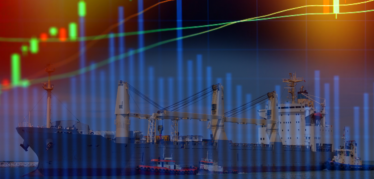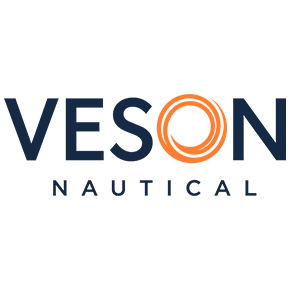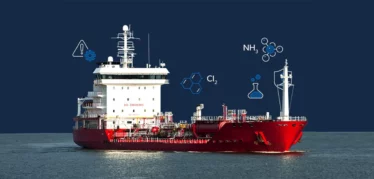For a very long time, there has been two primary risks markets in commercial maritime: bunker risk and freight risk. These two risk areas are relatively familiar, and many maritime organizations already have systems in place to track, monitor, report, and hedge against them.
For the first time in decades, a new major risk market has entered the scene, and that is carbon risk. Carbon risk is becoming increasingly prevalent as new markets and trading schemas are coming into effect globally and shipping is being incorporated into them. It is therefore increasingly important for maritime industry participants to proactively adapt to regulatory shifts. However, with upcoming regulations often becoming a mysterious moving target, it can be difficult to understand how to move forward.
In our recent Calculating Carbon Risk Webinar, I spoke about how to address carbon risk and integrate carbon exposure into your risk management approach; how the upcoming EU ETS regulation is likely to impact your workflow, from contract management through risk management and business decision making; and finally, some of the carbon exposure management functionality being rolled out in the Veson IMOS Platform. This blog post will review some of the highlights from our webinar discussion on carbon exposure management in maritime shipping. Let’s get into it.
You can access the webinar recording for Calculating Carbon Risk here to hear the whole conversation.
What is needed to properly address carbon risk?
To account for carbon risk in a practical and effective way, a few key elements are necessary:
- The ability to measure carbon risk based on factors like consumption and fuel type for all contracts, including your physical contracts, to understand your risk position.
- Hedging risk of market fluctuations and price movements out into the future through paper trades.
- Reporting on carbon risk in a way that is detailed and scalable for your organization.
The impact of upcoming regulations on maritime workflows
In a previous webinar on managing regulatory risk, industry panelists stressed the significance of EU ETS as a regulation slated to bring about significant changes for shipping. While IMO CII will certainly impact the market by way of vessels now being rated and tracked, EU ETS will have a dollar amount impact that directly effects the bottom line for every contract and every voyage. With that in mind, let’s take a look at some challenges and solutions around the upcoming EU ETS:
The regulatory challenge: Contracts that have itineraries hitting EU ports on or after January 1, 2024 will have an associated carbon risk, calculated based on CO2 emissions for each fuel type.
The solution: Firstly, organizations will need to be able to accurately estimate fuel consumption for a given movement. Then, building on these estimates, they will also need to evaluate emissions – including those under EU ETS. As not all voyages will be applicable for the EU EST regulation, organizations will need the ability to understand what percentage of the emissions do apply as well as account for the phase in logic of EU ETS over time. It will also be essential to be able to look at the overall trading P&L summary or overall market positions as well as drill down to specific positions. Organizations will ideally be able to view CO2 exposure alongside bunker and freight positions as well as separately.
The regulatory challenge: The introduction of EU Allowances (EUAs) and EUA Futures into the market.
The solution: To account for EUAs and EUA Allowances, organizations will need to track these instruments alongside physical exposure to achieve a total picture of their risk.
The regulatory challenge: The EU ETS compliance comes with a significant reporting burden. There is a distinct need to understand the complex P&L impact of carbon risk and integrate it into both pre-fixture and operational decisions.
The solution: Organizations will need a scalable way to create reports that account for carbon risk and support compliance. Greater granularity is needed with this reporting so organizations can drill down into reports on a desk, strategy, vessel type, and contract basis.
Carbon exposure management with VIP
VIP’s dynamic Trading & Risk module provides risk managers and freight traders the ability to systematically visualize how market shifts affect their freight, bunker, and carbon positions, properly align contracts, and save valuable time. With Trading & Risk, organizations are equipped with solutions to all of the above challenges brought forth by EU ETS and other regulations.
Trading & Risk can estimate fuel and bunker consumption via the benchmark estimate functionality, which utilizes estimated vessel consumption details, itinerary and routing information, and consumption on a fuel type by fuel type basis. This is then used to calculate the carbon risk. Users can also capture both EUAs and EUA Futures and link paper trades to physical trades and cargo contracts for a comprehensive understanding of their full position. Users can closely track voyage P&L and trading P&L to understand the impact of carbon risk, with the ability to drill down into granular detail.
Veson is committed to continuous improvement so that our client community is well supported to tackle the challenges and opportunities of today and tomorrow. To hear the full conversation on carbon exposure management in maritime shipping, access the webinar recording.



 Chris Aversano
Chris Aversano
 Veson Nautical
Veson Nautical
